Terror and Horror in Poe’s “The Cask of Amontillado”

Terror and horror are integral components of the Gothic novel. However, these terms are commonly used in an interchangeable manner. When observing the formulaic components of the Gothic novel it is difficult to dismiss either of these aspects as identical or capable of evoking the same form of emotions. Terror is the state of apprehension, dread, unknowing, and intense fear. A key component of terror is the intangible element that causes these emotions while creating a realization of the lack of control experienced in one’s surroundings. Horror, on the other hand, is the moment of confrontation when the intangible; the feared spirit, or villain, becomes an undeniable truth. Terror builds up a state of emotions whereas horror leads to the combustion of rationality with the impossible becoming a tangible, undeniable reality.
Differentiating “Terror,” from “Horror”

According to Anne Radcliffe: “Terror and horror…are so far opposite, that the first expands the soul, and awakens the faculties to a high degree of life; the other contracts, freezes, and nearly annihilates them” (Varma 3). Radcliffe’s definition is integral to understanding the different levels in which these aspects, terror and horror, function on a sensory, emotional, and physiological level. Terror causes an intense sensory overload, while horror suspends the senses due to a state of fright, which blurs the individual’s ability to react. Aspects of terror and horror are utilized in Edgar Allan Poe’s short story, “The Cask of Amontillado.”
What makes this particular experience of terror different from the typical Gothic novel is the reader’s experience of terror on a heightened level due to the character, Fortunato’s inability to foresee any of the clues of his inevitable demise. While some have referred to Poe as an outlier in the framework of the Gothic novel, the elements of this subgenre are explicitly and precisely executed in this short story. The excruciating buildup of apprehension and terror escalates to an inescapable level of awareness manifesting with the horrific ending, which reveals the true extent of man’s malevolence.
The Confession
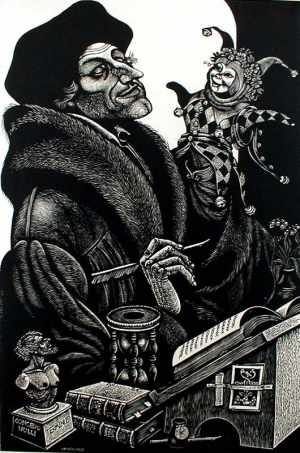
In “The Cask of Amontillado,” the short story opens with a confession. What differs from this act of confession is the lack of repentance expressed in the tone of the protagonist Montresor. “The thousand injuries of Fortunato I had borne as I best could, but when he ventured upon insult I vowed revenge” (Poe 415). The vehemence in Montresor’s tone defies the act of remorse, and instead connotes an expression of pride regarding his evil actions as both honorable and just.
Further perplexing is his ability to narrate events in a calm, rational manner. The present verb tense is used extensively during this “confession,” “I must not only punish but punish with impunity,” creating a setting in which his actions, fifty years prior, come to life before his eyes (415). His ability to recall events precisely denotes the level of satisfaction garnered from these acts of malice. Montresor admits to his cunning ability to smile in Fortunato’s face, providing him with a sense of friendship when in fact Montresor’s smile is due to malicious intent.
Montresor devises a plan of exacting revenge in the torture and death of Fortunato. Similar to a well-played chess game, Montresor tells Fortunato everything he wants to hear and relies on double-meanings of words and coaxing Fortunato’s ego to lure him to the catacombs below Montresor’s castle.
The Perfect Setting: Carnival
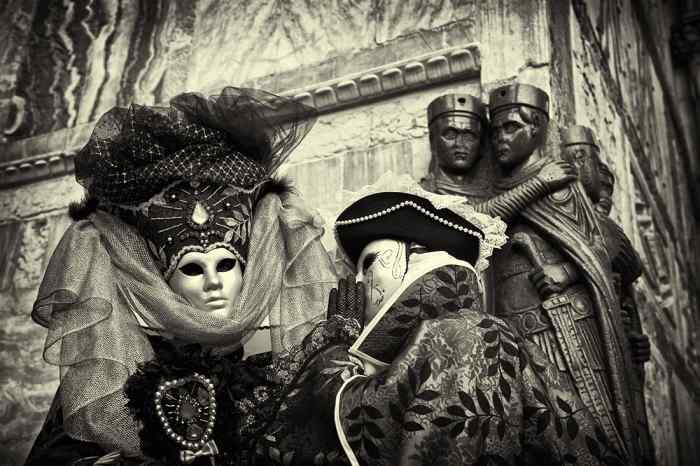
As the story progresses, Montresor describes Fortunato’s willingness to accompany him home during Carnival to taste the amontillado wine. He first mentions that Fortunato prides himself on his connoisseurship of wine and then states that similar to his countrymen, Fortunato is nothing more than a quack, or an incompetent fake (415). Montresor’s is not of Italian heritage as he is a Parisian, a foreigner, which is a common characteristic of the Gothic novel. This theme of “otherness” is implied when Fortunato states that Montresor is not of the brotherhood, further isolating Montresor from Fortunato’s social strata (418).
The tombs are another setting common to the Gothic novel. The gravesite of Montresor’s ancestors will be the setting in which Fortunato dies and symbolize as a trophy for Montresor’s act of revenge in the name of his family. Their meeting during Carnival, when Fortunato is dressed in a Fool’s attire, symbolizes the ease in which Montresor lures Fortunato to the catacombs due to Fortunato’s gullibility.
“Fortunato’s carnival identity is a significant detail in the story, for Montresor’s plan is to make a fool of his enemy” (Barban 54). As for Montresor, he is wearing a black silk mask and a roquelaire, a costume resembling an executioner (Baraban 54). The madness associated with Carnival, the “Spring festival of the fleshly appetites” adds to the eeriness of the setting (Thompson 415). It is a night when the unexpected can easily occur and social conventions are ignored, as people are permitted a day to engage in their fleshly appetites (415).
During carnival, identities are destabilized and traditional social hierarchy and etiquette collapse. The atmosphere of the Carnival fits nicely with Cavallaro’s definition of terror, which, he states, “eludes and thus makes comprehension impossible, creating a state of alienation from one’s surroundings leading to feelings of dread, loss of control, and nervousness” (3).
Though Fortunato does not show any signs of distress until his horrific end, it is the reader that experiences these feelings described by Cavallaro. Since the beginning of the story has already stated how the story will end, there is still this lack of incomprehension due to an omission of details and difficulty fathoming what has led Montresor to seek such vicious means of revenge.
The Reader: An Unwilling Accomplice

Due to Fortunato’s complete lack of awareness regarding Montresor’s motives, it is the reader who experiences the feelings of dread, apprehension and unknowing associated with terror. Though it is understood from the beginning of the story that Fortunato will die, what is unknown is the manner in which he will meet his demise. As the story progresses the reader is provided information regarding Fortunato’s descent to death, but still must employ the tactics of a detective, connecting the puzzle pieces, due to the numerous omissions of details. Due to Montresor’s carefully orchestrated execution of actions, the reader waits in suspense for what will likely be a horrific death scene.
When Montresor describes his acts of revenge,“It destroys any hope in Montresor’s humanity,” and highlights once again that Montresor feels no guilt regarding the murder of Fortunato (Baraban 49). Instead of remorse, Montresor views his actions as a successful act of vengeance and punishment, rather than a crime. As the predator (Montresor) and prey (Fortunato) walk through the streets, Montresor creates an excessive level of comfort for Fortunato by coaxing his ego and telling him that only he has the expertise to test the quality of the amontillado wine.
Ironically, when Montresor tells Fortunato he will have their friend Luchresi taste the amontillado, Fortunato responds, “Luchresi cannot tell Amontillado from Sherry,” to which Montresor replies, “And yet some fools will have it that his taste is a match for your own” (Poe 416). This is a particular example of Montresor’s cunning command of language, as amontillado is a type of sherry, and his response leads to Fortunato unwillingly admitting to his own foolishness. Fortunato is far from a connoisseur, and Montresor’s double meaning of “fool” attributed to Luchresi, is truly in direct address to Fortunato’s lack of sagaciousness.
Psychological Aspects of Fortunato and Montressor
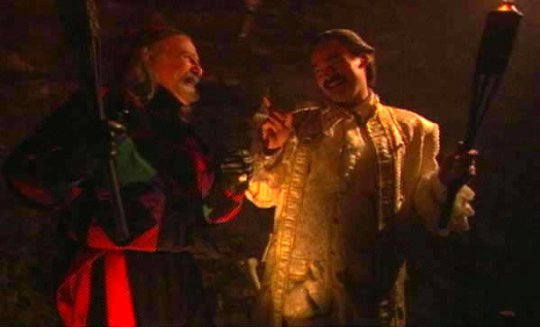
“The Cask of Amontillado” is illustrative of the psychological Gothic novel that gained prevalence towards the end of the nineteenth century. Clive Bloom discusses the nature of the psychological Gothic novel as “the internal realm of the psyche becoming the principal threat and, within it, the ineffable demands of the will” (11). Fortunato’s foolishness derives from his inflated Ego. Therefore, Fortunato’s greatest enemy is himself, due to allowing his appetite for wine and compliments to exceed his logical though processes.
Fortunato is described as a man of excess, gullible, and lacking inquiry. Fortunato’s weaknesses can be attributed to an overwrought Ego. An excess of Ego leads to a heightened state of pleasure seeking behavior. The goal of the Ego is the attainment of satisfaction, and a desire to avoid pain. Though the Ego engages in secondary thought processes, which is rational and realistic, instead, Fortunato exhibits illogical thought processes.
Due to his lack of inquiry and inability to consider the possibility of Montresor fostering alterior motives, Fortunato is reflected to the reader in a one-dimensional manner. His inability to successfully mediate between his relish for pleasure and the necessity of imploring higher-level thought processes illustrates an imbalance between the id, ego, and superego. His lack of inquiry adds to his characterization as a flat character with the inability to garner sympathy from the readers.
How Poe Differs from the Traditional Gothic Novelists

While “The Cask of Amontillado” falls under the subgenre of Gothic literature, Poe employs literary techniques such as the role of the reader as a detective, and the omission of detail that complicate the ease in which the story fits the Gothic framework. Poe’s elimination of supernatural elements and reliance on the vices of man to connote a tone of evil that is palpable due to existing in the realm of plausibility creates a level of terror too close to reality. When the possibility of evil events occurring in reality is introduced, the level of terror evoked is frightening, due to the reader’s realization of being surrounded by potential villains in the form of mankind. As for the role of the reader, due to the omission of numerous details, a reader must assume the role of detective. In doing so, the reader’s imagination becomes heightened, as possible conclusions are made solely based on interpretation.
The Reader as Detective?
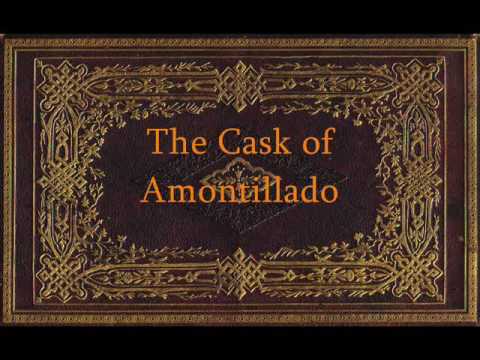
According to Silvia Ammary in “Poe’s ‘Theory of Omission’ and Hemingway’s ‘Unity of Effect’,” the reader must enact the role of a detective in attempting to understand Montresor’s reasoning for revenge, as well as attempt to discover a rational motive for the murder (56). “For Poe, it is not the supernatural beings that people should fear; the real horror lies within; in the heart of darkness” (59). The removal of logic and understanding creates an eerie framework in which the inexplicable leads to feelings of terror, as the realm of the unknown is breeched. “Given that there are no logical explanations why Montresor hates Fortunato that much to vow such revenge, the omission of logical motive enhances the horrible and horrific nature of Montresor’s act, making him a perfect character in a Gothic tale” (56).
Another pivotal point discussed by Ammary is the inability to view Montresor’s narration as reliable or trustworthy. Further complicating the narrative is the level of information provided to the reader, placing him or her in a higher level of understanding than the character, Fortunato. While smiling at Fortunato and complimenting his knowledge, Montresor communicates his true intention to kill him to the reader (56). As Ammary states, the omission of details “is essential in highlighting the discrepancy between appearance and reality” (58). This inability to decipher between reality places the reader in a state of distraught while creating sensory overload as the reader anxiously attempts to make sense of the unfathomable events taking place.
The Role of the Imagination

Though these aspects of Poe’s writing create a spine-tingling Gothic story filled with numerous inquiries, it is the utilization of the imagination that crosses the boundaries between reliability and inexplicability. Unfathomable elements are what lead to feelings of terror and fright, when reason appears to have vanished. Terrence Martin discusses Poe’s ability to utilize the imagination. In “The Imagination at Play: Edgar Allan Poe,” Martin describes Poe’s utilization of the imagination as unlimited in range, and revealing an “artist at play” (194). “Hoaxes, puzzles, puns, and jokes abound in Poe’s work as one manifestation of the imagination at play” (194).
Critics Freehafer, Baraban, and Ammary have also used the word “puzzles” in describing Poe’s work. When considering the numerous omissions of details that leave the reader to enact the role of detective, these descriptions of puzzles and hoaxes are a fair assessment of Poe’s style. Martin describes Poe’s use of the imagination as a mean of play in his stories as an attempt to refute society’s disallowance of imagination (195). In this respect, setting the story during Carnival allows Poe to enact revenge, with disregard to the immoral act of murder.
“The conception of play as an activity with no moral function suggests an important way of understanding the absence of a moral dimension in Poe’s work: the imagination at play would have other, a-moral concerns simply by reason of its playing”(196). The term “play” is continuously used in Martin’s article and it should not be mistaken as a childlike activity, but more of a toying with the reader’s emotions and even viewed as a challenge to the mores of society and the creation of an inverted sense of reality.
The lack of remorse in “The Cask of Amontillado” sets the tone of an anti-moral story creating a setting in which the reader becomes engulfed into accepting the death of Fortunato as necessary. “We, as an audience, listen with interest to the boast-as-confession being made. Once it is made, we laugh and take it as some kind of joke; it would be murder to take it any other way” (Martin 197). This playful tone evokes the imagination while implicating the reader into the role of a co-conspirator.
Yet, the reader is tricked into this role due to Poe’s use of perverseness in dramatizing the relation between the imagination and the world (203). Through this blurring of realms of existence the readers become lost in the narrative and are especially persuaded when encountering a rhetorician as effective and influential as Montresor. The perverseness of the story intercepts rationale, distorting temporal distinctions, normal societal boundaries, and leading to the “disintegration of personality” (Martin 208). This is what leads to the reader’s inability to sympathize with Fortunato throughout the majority of the story and to engage in Montresor’s narrative while forgetting the actuality of the story describing a horrific act of murder.
Fortunato’s Weaknesses Leads to a Lack of Empathy
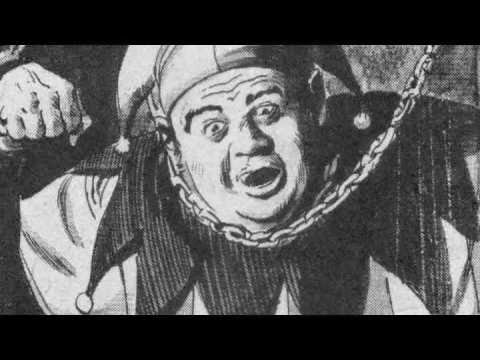
The inability to sympathize with Fortunato is partially due to his lack of voice juxtaposed with Montressor’s superior command of language. John A. Dern explores this topic in his article “Poe’s Public Speakers.” Dern states that the Montressor’s “rhetoric of effect” creates a “reader-narrator rapport, which is important to the dramatic effect” (53). On the other hand, it is Fortunato’s lack of voice that creates a distance between he and the reader, which leads to the lack of empathy expressed towards the victim.
The pivotal distinction between the animal kingdom and mankind is the acquisition of language, “Some rhetoricians claim that ‘there is an important connection between being heard publicly and being accepted as a human being’” (Dern 53). Fortunato is only related to the reader—through the narration of Montresor—as a pompous, self-consumed man, which creates a divide between himself and the reader. Montressor carefully utilizes language to influence the reader into believing that his motives are correct and just, through diction such as: “avenged, punish, wrong, unredressed, redresser, avenger, which all connote correction or reparation” (Dern 60). Dern describes these terms as “trigger words” capable of playing in the mind’s of the reader and subconsciously influencing the reader to agree with Montresor’s actions.
Through wit, puns, and satire, Montresor successfully dehumanizes Fortunato. Fortunato’s murder becomes obsolete in the minds of the readers due to Fortunato’s lack of voice and Montressor’s exceptional command of language. Another integral point is the fact that the reader is well aware of Fortunato’s impending death due to the formalistic components of the story beginning with a frame-style narrative. Part of Montresor’s appeal is due to his composed manner of engaging in the narrative, in a methodical way presupposing a level of rationality. Yet, his ability to calmly describe his carefully orchestrated motive should immediately cause fear and terror due to recognizing a man devoid of conscience.
Montresor’s Final Act of Revenge
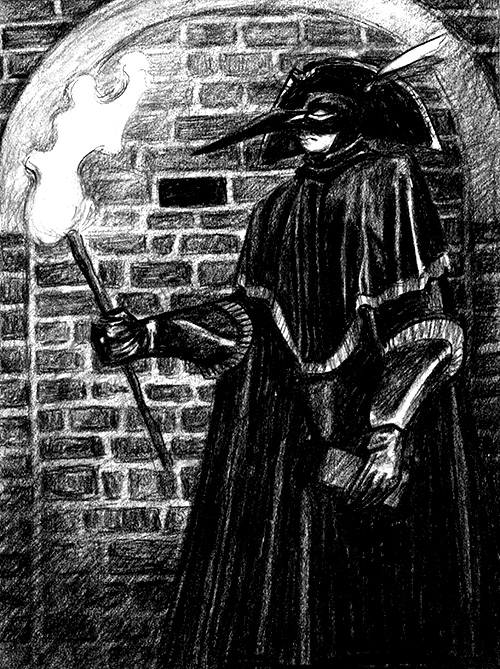
“The Cask of Amontillado” poses a complex scenario in regards to the experience of terror and the eventual horror. As opposed to Fortunato relating his experience of terror, it is the reader who is transported into the narrative due to Fortunato’s lack of knowledge. Therefore, as opposed to experiencing terror through the eyes of Fortunato, the reader experiences the terror on a heightened sensory level as if it is the reader travelling the streets, dressed as a fool, entering the catacombs. Though Montresor’s attempts to seduce the reader through language are successful at times, it is when the reader engages in introspection and realizes the iniquity of his actions when the terror seizes the reader.
When Montresor pours Fortunato a cup of “De Grave” the insinuation is too palpable to ignore, especially due to their being in the catacombs. Yet, it is the moment of revelation when Montresor quickly shackles Fortunato to a wall and begins constructing a wall—a task Fortunato previously thought Montresor was incapable of due to not being a known masonry. Montresor describes what takes place once he exacts his revenge, “I heard the furious vibration of the chains” is an eerie description that cultivates horrific imagery of a man chained like an animal (Poe 420) Possibly more harrowing is when Montressor describes “ A succession of loud and shrill screams, bursting suddenly from the throat of the chained form” further building upon Fortunato’s dehumanized state (Poe 420).
The Demise of Fortunato, the Unfortunate

What makes the manner in which Fortunato is murdered horrific is due to the playful tone of Montresor’s description of events preceding the death scene. The nonchalant manner of describing Fortunato’s steps towards his execution creates a conundrum of emotions. The matter is serious but the way it is being explained is satirical. The terror slowly unraveled in puns and the setting of carnival in which social conventions are forgotten and the fleshly appetities are satiated.
The playfulness of Montresor’s words and Poe’s literary style create a format in which the reader becomes disillusioned with the reality of the situation. Yet, as the story progresses, Montresor’s wit is no longer engaging, but frightening as the true malevolence of man is revealed. His echoing the screams and cries of Fortunato is the actions of a maniacal individual. This story is what nightmares are made of. This is not taking place amongst supernatural creatures but between men, with one blinded by vengeance and the other blinded by pleasurly pursuit and conceit.
Though “The Cask of Amontillado” may not perfectly fit under the subgenre of Gothic literature, it should be remembered that this form of literature is described as connoting, “sensationalism, violence, madness, terror, horror, fear of the supernatural, a foreboding sense of evil, a perception of awesome and sinister mystery” (Thompson 77). Disregarding only two of these descriptions, Poe’s story abides by all of these facets capable of concocting an exceptional addition to Gothic literature.

Works Cited
Ammary, Silvia. “Poe’s ‘Theory of Omission’ and Hemingway’s ‘Unity of Effect’.” The Edgar Allan Poe Review, Vol. 11, No. 2 (Fall 2010), pp. 53-63. Penn State University Press. JSTOR. 14 Dec. 2015.
Baraban, Elena, V. “The Motive for Murder in “The Cask of Amontillado” by Edgar Allan Poe.” Rocky Mountain Review of Language and Literature, Vol. 58, No. 2 (2004), pp. 47-62. 12 Dec. 2015.
Bloom, Clive. Gothic Histories: The Taste for Terror, 1764 to the Present. New York: Bloomsbury Academic Publishing, 2010.
Cavallaro, Dani. “The Frame of Reference: Theoretical Debates on Horror, Terror, and Fear.” Gothic Vision: Three Centuries of Horror, Terror, and Fear. New York: Bloomsbury Academic, 2015. P. 1-15.
Dern, John A. “Poe’s Public Speakers: Rhetorical Strategies in ‘The Tell-Tale Heart’ and ‘The Cask of Amontillado’.” The Edgar Allan Poe Review, Vol. 2, No. 2 (Fall 2010), pp. 53-70. Penn State University Press. JSTOR. 13 Dec. 2015.
Martin, Terence. “The Imagination at Play: Edgar Allan Poe.” The Kenyon Review, Vol. 28, No. 2 (Mar., 1966), p. 194-209. 12 Dec. 2015.
Poe, Edgar Allan. “The Cask of Amontillado.” The Selected Writings of Edgar Allan Poe. Ed. G.R. Thomposon. New York: Norton & Co., 2004. 415-421. Print.
Thompson, G. R. “Tales and Sketches.” The Selected Writings of Edgar Allan Poe. Ed. G. R. Thompson. New York: Norton & Co., 2004. 77-80. Print.
Varma, Devendra, P. The Gothic Flame. New York: Russell & Russell, 1996. Print.
What do you think? Leave a comment.











It is actually rather plain for Poe. It is quite straightforward and lacks the focus on personal horror or terror that many of his similar stories imbue. It’s not that the subject matter doesn’t match his larger theme, but rather it’s as if he’s setting forth a concept without exploring it in detail.
I really like the foreshadowing in this horror story.
I’m just not cool with the fact that Montresor wants to brick his friend alive just because he said something to him and hurt his feelings. Like, grow some balls Montresor.
Quality analysis. This is such a horrifying tale because the narrator is relaying the story in a calm manner, yet his actions prove him to be a sinister and deranged man.
I think I’m a bit biased when it comes to Poe since I love all of his Gothic works, but this is a fantastic analysis. I especially love how you added the part of the reader being complicit in the narrator’s acts (something I think Poe used to a better degree in “The Tell-Tale Heart”) and having to be a detective to “solve” the story. There’s a sense of discomfort at reading the narrator’s deeds, but we also can’t stop reading because we’re so pulled into it.
Great article! Poe is on of my favorite authors. I agree with Karen; you make an excellent point about Poe’s readers being complicit in the narrator’s acts.
Poe really gets you into the story by using sensory details.
I feel a little curious as to about what kindled Montresor’s hate for Fortunato. I mean how bad of a thing could someone really do to deserve such a penalty.
Reading this article is liberating.
Maybe I will have to read it twice, or I am simply not that impressed by this highly praised author.
Poe’s ideas about horror aren’t the blood and guts of modern horror fare, but instead he focuses on the horrors of the mind, revenge, and single-mindedness to the point of madness.
There’s nothing like a good satisfying revenge story!
Ah one of Poe’s masterpieces! This one creeped me out a bit more than “The Tell Tale Heart” simply because I’ve been in the catacombs before and I know how unbelievably creepy they are.
I like darker stories because they keep me interested, and always have me on the edge of my seat. Although this story was very dark and odd, it did keep me interested. I love the language Poe uses in all of his stories, especially this one.
“Yet, it is the moment of revelation when Montresor quickly shackles Fortunato to a wall and begins constructing a wall—a task Fortunato previously thought Montresor was incapable of due to not being a known masonry.”
This is not right. Fortunato is a Freemason, and he denies that it is possible that Montressor could be a ‘Mason’ as well, because he is Catholic, hence the confession.
This was always one of my favorite Poe stories as a kid.
I always loved Poe’s use of ironic surnames, such as Fortunato for a guy who’s immured in a subterranean chamber; or Prospero for a guy who provokes a visit from the living (?) embodiment of a horrible plague.
I know that there are some psychological analysis there, entombed in the main story, but I was shocked when I didn’t find any purpose and intention between parts of the main plot.
It is really similar to “the black cat” in some ways.
Yeah, it closely follows his work ‘The Black Cat’ in how well formed and created his scenery and character is.
The fate of Fortunato is satisfying and delightfully symbolic.
One thing that surprised me was how mad the narrator got over a simple offense. That’s all part of how the story is twisted, I suppose, so it’s not a dislike of mine.
Love its Gothic horror nature.
When I first read this in 3rd grade I had no clue what Amontillado was and it wasn’t defind in the dictionary. Internet wasn’t around. Poe and Shakespeare encouraged me, at a young age, to get out the big dictionary and learn new words and enjoy words. Horror + drunkeness = awesome story.
I didn’t really like the darkness, or the crazy psycho-killer main character, but for some reason not liking it made me like it.
I thoroughly enjoyed this analysis of Gothic literature.
I love this story tremendously and shall forever. Thank you for writing this article.
Gore, bloodless gore. There is nothing better.
I cannot imagine facing Fortunato’s fate and having someone turn that despicably on you.
I’ve read this story in every English class I’ve taken since freshman year of high school and I haven’t gotten tired of it yet. The ultimate evil in the story turns out to be a very human monster– quite an apt metaphor.
One of my first encounter with the idea of being alive.
A decent piece of writing, but certainly not Poe’s best work. I do wonder why this particular piece is so seemingly iconic?
I found it to be anti-climactic. It was also too short. I read it while I was riding my “lazy” bike and was done less than 20 minutes into my 30 minute session.
Wait so the story has an anti-climactic ending and you didn’t like it because it didn’t take you all the way through your workout?
You should try reading it in the dark next to candlelight as opposed to at the gym. Much better aura.
As a young teenager this was one of the first books I read, and the very first to give me nightmares. For weeks. Poe’s masterful prose and his ability to portray the darkest and irrational side of the human soul in this magnificent book is haunting.
Love this. As a fanatic myself when it comes to the horror and macabre genres, I found this to be especially intriguing.
Read this ages ago. Then read this article, and now, my understanding for the story allowed me to become more fascinated with the story. Then I reread it and I found it really interesting. Thank you.
It’s such a dark and twisted exploration of the human condition.
Beautifully explained. It’s amazing how a literary device such as dramatic irony can lift the inclusion of the reader in a story. When a reader feels as if they are part of the story as opposed to a simple viewer, the stakes change a bit in regards to character(s). While I may have a bias being a fan of Poe and enjoy reading what others have to say in regards to his work, I believe this analysis is extremely clear and insightful. The explanation of terror vs. horror is a refreshing angle for a repetitive theme found in Poe. Thank you for your contribution.
Interesting
One of my favorite tales of Edgar Allen Poe. Poe’s pacing and backstory are excellent.
I love the narrator’s voice in this piece, especially narrator as villain. It would be great if we could have a movie using this conceit.
What I love about this is that you’re saying, basically, that terror exacerbates existing fears with which we are already familiar while horror is frightening because it introduces an unfamiliar conception or side of reality. That’s really interesting!
I feel confused because Poe uses very hard word to understand and sometimes i don’t get what he is trying to portray in front of me. I also feel scared because Montresor killed Fortunato without even having a second thought about it. That’s very uncomfortable to be and i instantly know that he is crazy.
Montresor tells Fortunato everything he wants to hear and relies on double-meanings of words and coaxing Fortunato’s ego to lure him to the catacombs below Montresor’s castle.
i like your article, i am too trying to become a good writer for this blog area. i would like to one day receive notary back from you to me. I would like to discuss many things with you
A thorough, lucid, and introspective treatment of the dark and convoluted imagination of a master poet. Read it only once; but, will have to re-read with a much more discerning eye (and heart) for the exhaustive list of literary elements listed in this interpretation.
I love this story. I also love how Poe uses human psychology rather than supernatural or seemingly supernatural elements as many did during the first gothic movement. Radcliffe showed that the monsters were people the whole time, but Poe never hid that people were monsters.
Kind of crazy!
As a Poe lover I was immediately drawn to your title and area of focus. I thought you did an excellent job breaking down some of the important aspects of the classic short story. From an aesthetic stand point I thought the images were appropriate and kept me engaged. It was a good read.
Although I don’t know this story personally, Poe has always been one of my favourites. He has inspired a lot of my darker stories, alongside Lovecraft – I really found the deconstruction helpful, not only in regards to this story, but for my own horror writing.
I have studied Poe and the Cask of Amontillado in depth in the past, however this article truly provides a focused, detailed analysis of the story, one which I have found to chill most readers, including myself.
Thank you for this wonderful article. Clearly, it would have taken you a long time to procedure it. I am new Poe’s work myself having only read a handful of his short stories, but I found this article very thought provoking and timely. Thanks again.
Thank you for this wonderful article. Clearly, it would have taken you a long time to produce it. I am new to Poe’s work myself having only read a handful of his short stories, but I found this article very thought provoking and timely. Thanks again.
A wonderful look into the macabre aspects of one of Poe’s most famous stories.
Wonderful.
Interesting references for my own studies of the Gothic, many thanks! My personal definitions – horror is what you might or might not have seen out of the corner of your eye; terror is when you realise that it’s there are far worse than you could ever have imagined.
Lovely article on Edgar Allan Poe’s work. Thanks for writing it.
I haven’t read that many stories by Poet yet, but reading this article has made me more aware that classic authors incorporate so much more into their stories than just great storytelling.
The character Montresor seems to offer a cautionary tale: don’t be a doormat; you will do something rash later otherwise.